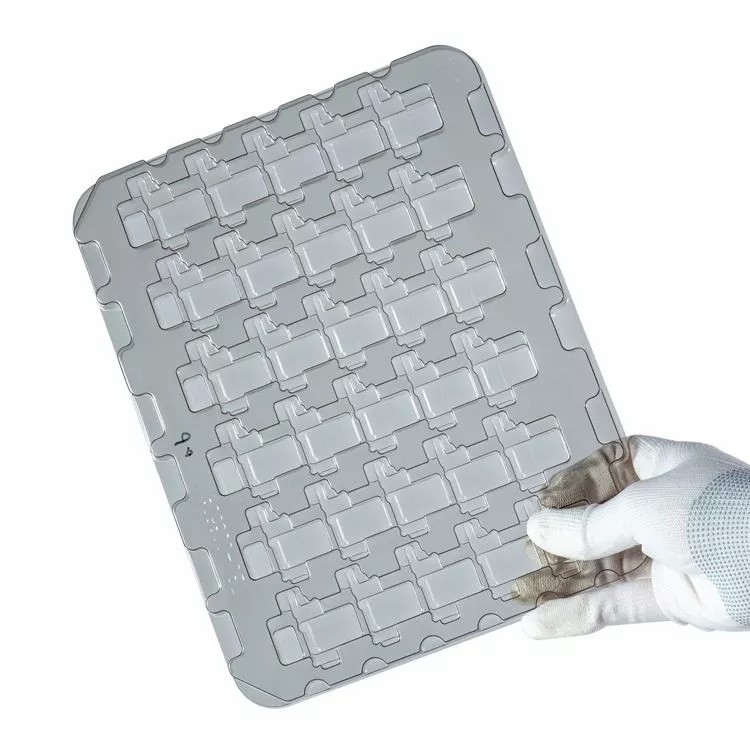ESD antistatic plastic sheet produced and tested way
Electrostatic Discharge (ESD: Electrostatic Discharge), should be the cause of all electronic components or integrated circuit system caused by excessive Electrical Stress (EOS: Electrical Over Stress) destruction of the main culprit.Because static electricity is usually very high instantaneously (several kilovolts >), this damage is destructive and permanent, causing a direct circuit burn down.Therefore, the prevention of static damage is the number one problem in all IC design and manufacturing.
Electrostatic, usually all is artificially generated, such as production, assembly, testing, storage, can be made in the process of electrostatic accumulated in human body, handling, instrument or equipment, even the components will accumulate static electricity, when people unwittingly make the charged object contact will form the discharge path, instantly making electronic component or system was damaged by electrostatic discharge (this is why the previous computer must wear electrostatic ring at the work table, prevent human electrostatic damage chips), as the electric charge stored in the cloud in an instant a dramatic lightning through the clouds, the earth would open,And usually all in the rainy day, because the air humidity is easy to form conductive to.

ESD standard and testing method: according to the way of electrostatic generation and damage mode of the circuit is usually divided into four testing methods: Human Body discharge mode (HBM: human-body Model), Machine Model (Machine Model), component charging mode (CDM: chargeable Device Model), FIM: field-induced Model), but the industry usually use the first two models to test (HBM, MM).
1. Human Discharge Mode (HBM)
It's the friction of the human body that creates the electric charge. Suddenly, the electric charge released by the chip causes the chip to burn down and break down. This is why people often get electrocuted when they touch others in autumn.There are also traces of ESD standards for HBM in the industry (MIL-STD-883C method 3015.7, effective human capacitance is 100pF, effective human resistance is 1.5Kohm), or the international electronic industry standard (EIA/JESD22-A114-A) also has provisions, which one you want to follow.If mil-STD-883C method 3015.7 is adopted, it specifies class-1 for those less than <2kV and class-2 for those between 2kV and 4kV and class-3 for those between 2kV and 4kV.
2. Machine discharge mode (MM)
Of course, the pin pin is released when the static electricity generated by the movement of the machine (such as robot) touches the chip, the second standard is EIAA-IC-121 method 20(or standard EIA/ JESD22-A115-a), the resistance of, and the effective machine is 0(because of metal), and the capacitance is still 100pF.Since the machine is metal and the resistance is 0, the discharge time is very short, almost between Ms or US.However, the more important problem is that, since the effective resistance of,, and is 0, the current is very large, so even the discharge of 200V MM is more harmful than that of 2kV HBM.And the machine itself has a lot of wires coupling to each other, so the current will change with time interference change,ESD test method similar to the inside of the FAB GOI test, after the specified pin to give him a ESD Voltage, for a period of time, and then come back to test electrical see if it is damaged, no problem to add a step for a period of time, the Voltage of ESD and electrical measurement, so until the breakdown, at this time the breakdown of the critical breakdown Voltage for the ESD Voltage (ESD failure threshold Voltage).Generally, we apply 3 zAPS to the circuit three times. In order to reduce the test cycle, the initial voltage usually USES the ESD threshold of 70% of the standard voltage. Each step can be adjusted by itself according to the needs of 50V or 100V.
Relative News
- Today’s delivery: 20 tons of PET plastic sh…
- White PS plastic sheet thermoformed yogurt cup te…
- Case: Application of PP plastic sheet thermoforme…
- Transparent PET sheet application case: used to m…
- Merry Christmas, warm blessings from PULIXIN
- Training meeting on PP and PS sheet production li…
- PP sheet application case: ideal choice for rice …
- What is the difference between CPET plastic sheet…
- Application of black conductive PS sheet in mobil…
- Uses of 0.18-1.8mm thick conductive PET sheets
